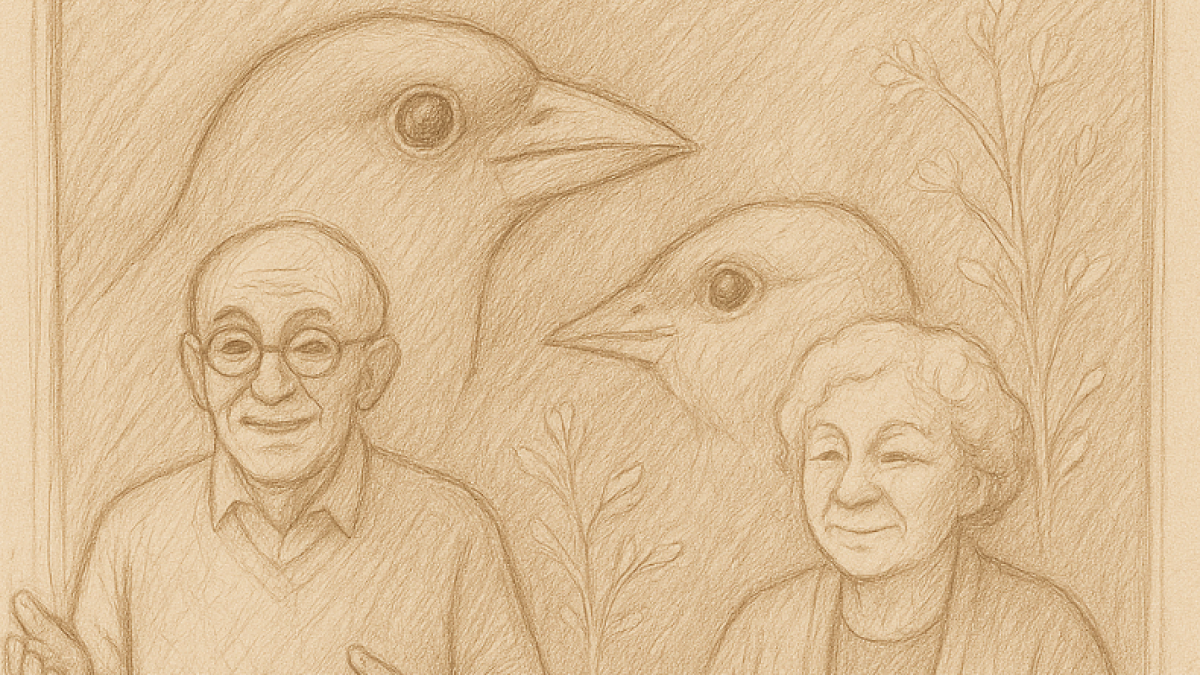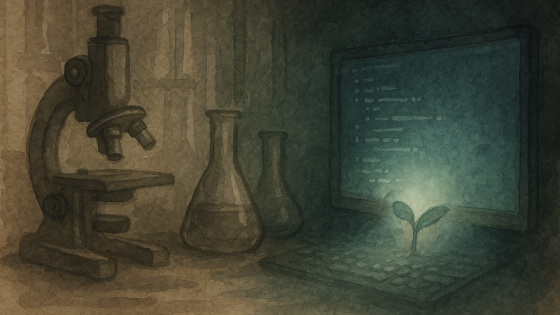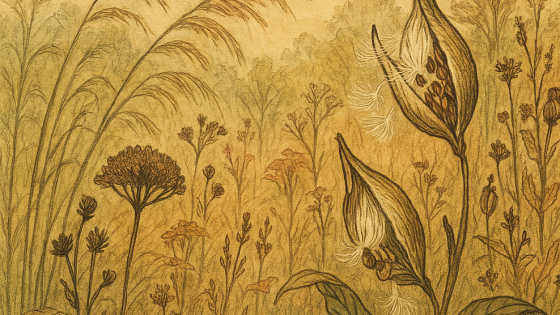Making Science Touchable: The Tale of Art and Discovery

Discover how art and science unite to create engaging, multisensory learning experiences that make knowledge accessible and unforgettable for all.
In a quiet gallery at Harvard University in Massachusetts, sunlight once danced through glass petals so lifelike that visitors held their breath, half, expecting a bee to land upon them. These were the Blaschka glass flowers, not mere ornaments but masterpieces crafted to teach. Each vein, each shimmer, was a lesson made visible, a secret of the natural world captured in fragile form.
It was in this gallery that my own early journey led, just before setting out for California to begin the next great adventure, a PhD in plant biology. The timing felt like fate, an intersection of past and future, art and science. That day, the visit was not just to see the glass flowers, but also to hear a talk by two of the oldest and longest-working researchers on the Galápagos finches project. A couple whose lives had been entwined with the birds and the islands for decades.

They spoke with the wisdom of years, sharing stories of tracking every bird, every shift in weather, every feathered drama that unfolded across the archipelago. A wise question on what they would change would leave the deepest mark : “We tracked the birds and the weather, but no one thought to track the plants. How they changed and adapted all these years alongside the finches.” In that simple admission lay a profound truth, one that resonated deeply.
In a lecture hall by the very room where glass flowers immortalize the overlooked beauty and complexity of plants, came the realization that even the most celebrated discoveries can cast shadows. The world had watched the finches, seen them become icons of evolution, while the plants, quiet, steadfast, ever-adapting, remained in the background, their stories untold.
This experience became a seed, planted in the heart of an artist and scientist. Seeing the Blaschka flowers up close was to witness how art could give voice to the silent and the unseen, making the invisible visible and the overlooked unforgettable. To hear the researchers regretted to understand the importance of looking beyond the obvious, of honoring the quiet companions in every story of change.
As the journey continued westward, to the sunlit labs and wild hills of California, these lessons traveled too. They shaped the way I approached science over time, not just as a quest for answers, but as an act of seeing, of noticing, of bringing the hidden to light. In art, as in science, the plants would not be forgotten. Their forms would be modeled, their stories told, their resilience celebrated.
And so, the tale of the glass flowers and the Galápagos finches became a parallel. A reminder that while the world often marvels at the spectacular, true discovery lies in seeing the whole, in touching every part of the living tapestry. Art and science, together, can bridge the gaps, making sure that nothing precious is left in the shadows.
So let the story continue. Let art and science walk together, breaking down barriers, opening doors, and reminding us all that the world is not just to be observed, but to be touched, heard, smelled, and loved.
But the story does not end with glass. For every age, some ask: How can the mysteries of science be made real, not just for the eyes, but for the hands, the ears, the nose, and the heart?

Some learners, it is said, do not find their way by reading or
listening alone. They are the builders, the tinkerers, the
dreamers who must
touch and shape the world to understand it. For them, art is not a luxury, it is a bridge. Art transforms complex ideas into forms that can be seen, touched, and felt. Through drawing, sculpture, music, and movement, art translates the abstract language of science into something intuitive and memorable. It invites learners to participate, to create, and to connect emotionally, making each discovery not just understandable, but unforgettable.
Imagine a classroom where models of cells are not just seen but felt. Fingers trace the contours of a mitochondrion, discovering its folds and crevices. A blind student, once left on the sidelines, now joins the adventure. Yet, the magic does not stop there. Sighted learners, too, find their understanding deepened, their sense of scale and structure awakened by touch.
Picture another scene: a table scattered with clay, wire, and colored threads. Here, students build the double helix of DNA, twisting and looping, laughing as they realize how the code of life is not just a diagram, but a dance. In another corner, a teacher pours scents into vials, pine, citrus, earth, inviting students to explore the chemistry of smell. Suddenly, science is not a distant thing, but something alive, something that can be held, shaped, and even smelled.
The wise say that multi-sensory learning is not a backup plan, it is a better plan. With the hum of 3D printers and the flash of laser cutters, new tools bring the wonders of science into every hand. Models of animal skulls, once locked behind glass, are now passed from student to student. The ridges of a dinosaur tooth, the spiral of a snail’s shell, these are stories told in three dimensions.

What of sound? In one school, the rhythm of a beating heart is transformed into music, each thump and flutter a note in a symphony of life. Students close their eyes, letting the pulse of biology wash over them, learning with their ears what their eyes cannot see.
These moments, these sparks of curiosity, do not belong to children alone. Grownups, too, find themselves drawn in. At a science festival, a grandmother molds a neuron from clay, her laughter mingling with that of her grandson. A businessman, once bored by biology, finds wonder in the scent of a rose dissected and explained.
For when science is presented as creative, inclusive, and full of wonder, it becomes a place where all are welcome. It becomes a mirror, reflecting the truth that every one of us is a living expression of science. Art breaks down barriers, reaching those who might feel excluded by technical jargon, and invites everyone to be part of the journey. It sparks curiosity, nurtures empathy, and turns knowledge into a shared adventure.
So let the story continue. Let art and science walk together, breaking down barriers, opening doors, and reminding us of all that the world is not just to be observed, but to be touched, heard, smelled, and loved.
And in this way, science becomes not just knowledge, but a living, unforgettable adventure.
We make it feel like a place where everyone belongs, because we do.
- Miller, J. (2010). Art and Science: The Blaschka Glass Models. Botanical Journal, 45(3), 123, 135.
- Harvard Museum of Natural History. (2023). The Ware Collection of Blaschka Glass Models of Plants. Retrieved from https://hmnh.harvard.edu/collections/ware, collection, blaschka, glass, flowers
- Fleming, N. D., & Mills, C. (1992). Not Another Inventory, Rather a Catalyst for Reflection. To Improve the Academy, 11(1), 137, 155.
- Shams, L., & Seitz, A. R. (2008). Benefits of multisensory learning. Trends in Cognitive Sciences, 12(11), 411, 417.
- Sousa, D. A. (2011). How the Brain Learns. Corwin Press.
- Birt, J., & Cowling, M. (2016). 3D Printing in Education: A New Frontier. Journal of Educational Technology, 12(2), 45, 53.
- Ford, S., & Minshall, T. (2019). Invited Review Article: Where and how 3D printing is used in teaching and education. Additive Manufacturing, 25, 131, 150.
- Wojciechowski, R., & Cellary, W. (2013). Evaluation of learners' attitude toward learning in ARIES augmented reality environments. Computers & Education, 68, 570, 585.
Categories: : All, SciCom Tips
 Rosalie Sinclair
Rosalie Sinclair 



